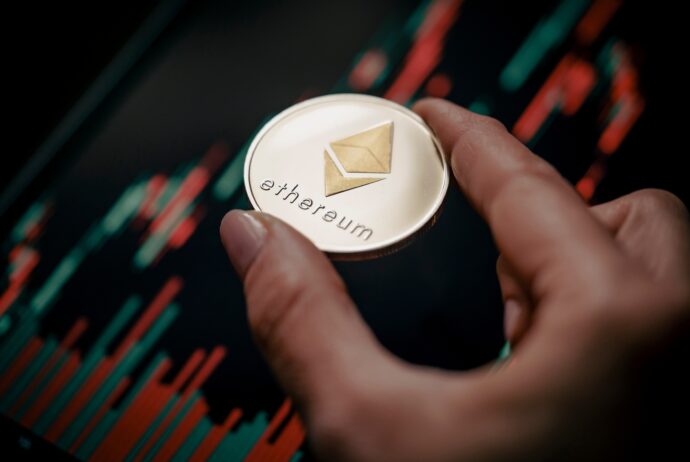Key Insights:
- Ethereum eyes $4,000 amid Layer-2 strength and bullish forecasts, but regulatory hurdles and competition pose risks.
- Layer-2 solutions like Polygon and Arbitrum bolster Ethereum’s scalability, yet SEC scrutiny and market competition loom large.
- Ethereum’s TVL surge and Shiba Inu’s success fuel optimism, while ETF delays and intensifying market competition create uncertainty.
Ethereum’s trajectory in Q2 2024 appears promising as it eyes a crucial milestone: breaching the $4,000 mark. Following its surge past $3,000 earlier in the year, Ethereum’s recent indecisive movement around $3,200 hints at a potential upward trend.
Analysts and enthusiasts anticipate that if Ethereum can overcome resistance levels, particularly around $3,700, it may pave the way for further gains. With the asset’s historic all-time high sitting at $4,808.74, achieving $4,000 seems within reach, potentially setting the stage for further growth in 2024.
Industry projections and sentiments echo this optimism, with forecasts ranging from $6,000 to above $21,000 by 2025. Such projections bolster investor confidence in Ethereum’s long-term prospects, fueling the FOMO sentiment among market participants.

CypherMindHQ.com Artificial Intelligence Crypto Trading System - Surpass the competition with this cutting-edge AI system! Utilize the prowess of innovative algorithms and amplify your crypto trading strategies with CypherMindHQ. Learn more today!
Shiba Inu’s Evolution as an L2 Ethereum Ecosystem
The success of Shiba Inu, initially conceived as a meme coin, now signifies a significant development within Ethereum’s ecosystem. As an ERC20 token operating on Ethereum’s Layer-2 infrastructure, Shiba Inu’s evolution showcases the platform’s scalability and adaptability. Its exponential growth in April, coupled with a surge in developer activity, underscores Ethereum’s robust foundation and its potential to facilitate diverse, decentralized applications.
Furthermore, Ethereum’s Layer-2 scaling solutions, including Polygon, Arbitrum, and Optimism, contribute to its appeal in Q2. These platforms demonstrate substantial progress and adoption, enhancing Ethereum’s utility and ecosystem resilience. Metrics indicating increased user engagement and transaction volumes across these Layer-2 solutions reinforce Ethereum’s position as a frontrunner in the decentralized finance (DeFi) space.
Ethereum’s Total Value Locked (TVL), a crucial metric reflecting the value staked in its ecosystem, continues on an upward trajectory. With Ethereum’s TVL surpassing $53 billion in April, it significantly outpaces competitors like Tron. This surge in TVL is attributed to various staking mechanisms, including Liquid Staking with Lido and lending platforms like AAVE. The steady growth in TVL underscores Ethereum’s robust network activity and investor confidence, further fueling FOMO among stakeholders.
Regulatory Uncertainty and Ethereum’s ETF Approval
Despite Ethereum’s optimistic outlook, regulatory hurdles pose significant challenges to its price momentum in Q2. The U.S. Securities and Exchange Commission’s (SEC) scrutiny over Ethereum’s classification as a security and the delayed approval of Ethereum ETFs cast a shadow of uncertainty over the asset. With the SEC’s ongoing investigations and the absence of clear regulatory frameworks, Ethereum’s market performance remains susceptible to regulatory FUD, dampening investor sentiment.
The SEC’s aggressive pursuit to classify Ethereum as a security adds another layer of uncertainty to its market outlook. Subpoenas issued to companies affiliated with the Ethereum Foundation fuel speculations of potential legal actions, exacerbating FUD among investors.
Moreover, Ethereum faces stiff competition from proof-of-work (PoW) blockchains like Bitcoin and Ethereum Classic, which capitalize on supply scarcity dynamics. This intensified competition further undermines Ethereum’s price stability and market dominance in Q2.
Competition from Emerging DeFi Platforms
Emerging DeFi platforms like Solana, Cardano, and Avalanche present formidable competition to Ethereum’s market position. With Solana’s projected rally and Cardano’s technical indicators signaling upward momentum, Ethereum encounters heightened pressure to maintain its competitive edge.
Additionally, Avalanche’s surge in transaction volume underscores the growing market appetite for alternative DeFi ecosystems. As investors weigh their options, Ethereum confronts escalating competition and regulatory uncertainties, fostering FUD sentiments in Q2.

CypherMindHQ.com Artificial Intelligence Crypto Trading System - Outpace the competition with this high-end AI system! Leverage the capabilities of progressive algorithms and enhance your crypto trading performance with CypherMindHQ. Learn more today!



